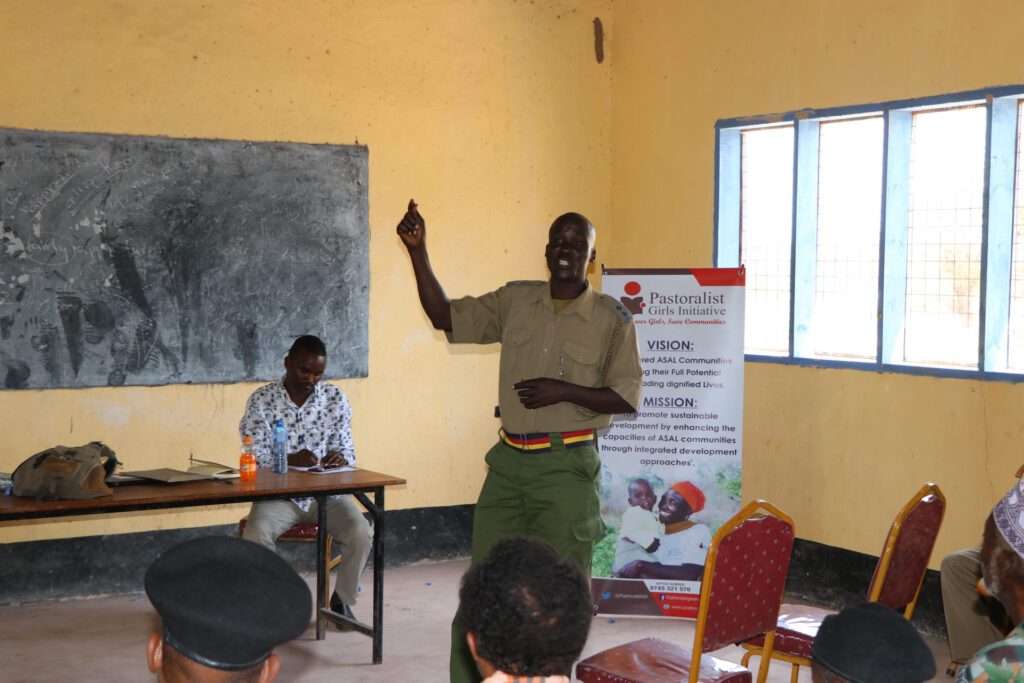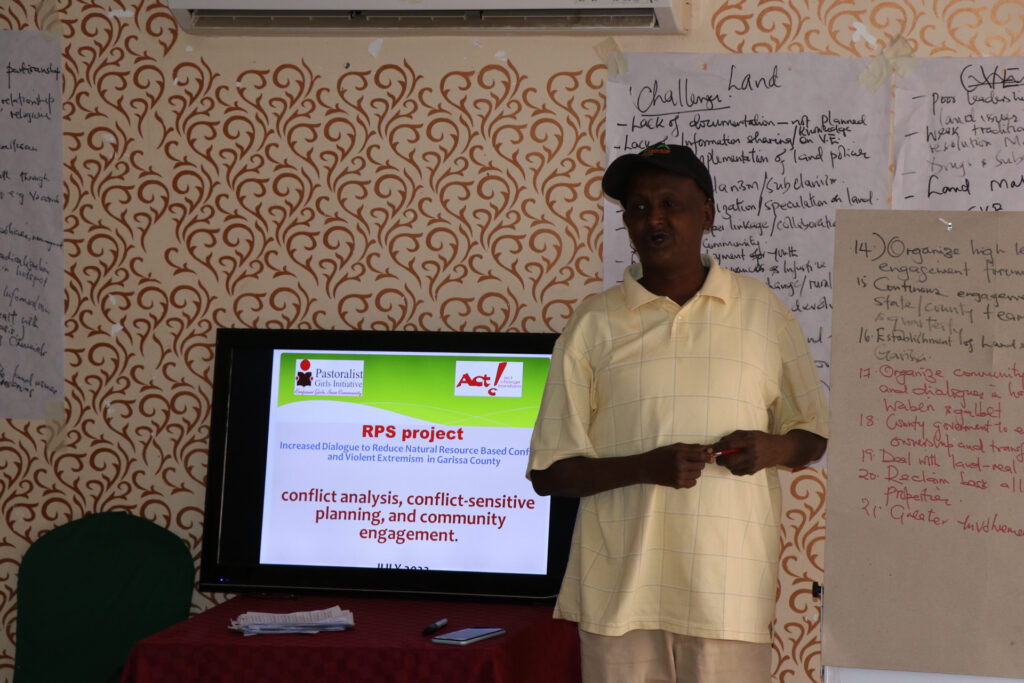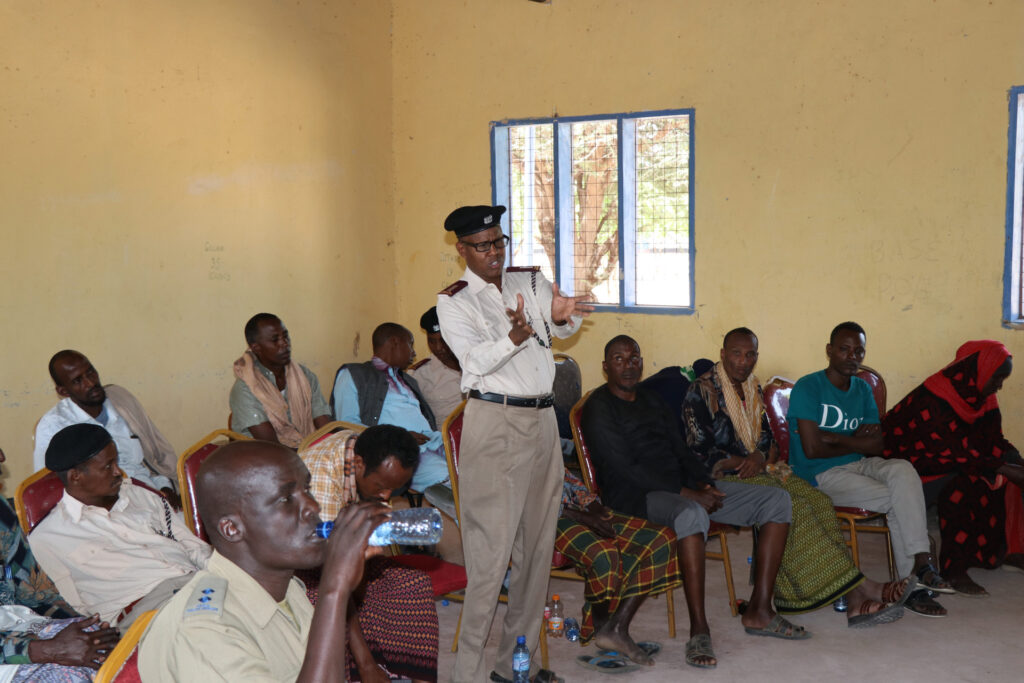Improve the retention of girls in schools by 20% by 2027.
The year 2024 marked significant progress in advancing the Education, Peace, and Security Pillar, with a focus on quality education, fostering retention and transitions in schools, and promoting peace and security in project areas. Through strategic partnerships and dedicated initiatives, key achievements were realized despite challenges such as prolonged floods and financial barriers.
Introduction
Education, Peace, and Security Pillar - Achievements and Outlook
Pastoralist communities in the ASAL (Arid and Semi-Arid Lands) regions of Kenya face unique and multifaceted challenges affecting education, livelihoods, and security. Education in these areas is particularly dire, especially for girls. While enrollment rates are low, transition rates from ECD to upper primary, and subsequently to secondary school, are even lower. Only a small percentage of girls complete their education, contributing to a cycle of poor academic performance across the region. Inadequate parental involvement exacerbates these challenges, undermining children's educational outcomes.
Teen pregnancies and child marriages further contribute to high dropout rates among girls in ASAL areas. For those who remain in school, poor infrastructure, inadequate resources, and an acute shortage of trained teachers hamper their learning experiences. This gap is often filled by untrained teachers, further weakening academic performance. To address these challenges, PGI remains committed to supporting education under its strategic plan by focusing on developing and equipping educational infrastructure. Security challenges compound the difficulties faced by pastoralist communities. Banditry, cattle rustling, inter-community conflicts over resources, and terrorism create an unstable environment that disrupts livelihoods and critical social services, including education. Resource pressures, including those on water and land, have intensified due to rapid population growth, increased farming activities, and the devastating effects of climate change, with some areas experiencing up to five consecutive failed rainy seasons.
Conflicts between pastoralists and cultivators, as well as internal clashes within pastoralist communities, are exacerbated by weak traditional governance systems, inadequate state security policies, small arms proliferation, and insufficient policing. These issues are further fueled by political and socio-economic marginalization, inadequate land tenure systems, and limited disaster preparedness. Women, children, and persons with disabilities disproportionately bear the brunt of conflict and insecurity. They face heightened inequity, hunger, disease, gender-based violence, human rights abuses, and emotional and psychological trauma. Additionally, the proximity of Garissa and Wajir to Somalia has increased the threat of terrorism, further undermining social services.
The reluctance of teachers from other counties to work in these regions has created a severe
shortage of skilled educators, particularly affecting opportunities for girls. PGI recognizes the critical need to prioritize conflict management and promote a culture of peace and security to create an enabling environment for development. Without peace and security, the potential for advancing livelihoods, education, and economic activities in ASAL areas remains bleak. By fostering stability, PGI aims to encourage investment and ensure sustainable development in these marginalized regions
Goals of the Year
Capacity Building and Empowerment
PGI recognizes the importance of empowering children as active participants in shaping their educational and social environments. To this end, the organization conducted targeted training sessions and capacity-building initiatives for student council leadership and child rights clubs. These efforts aimed to enhance the capacity, confidence, and agency of children, fostering meaningful participation and peer support within schools and communities.
- Training Outcomes:
- Engaged 246 student leaders and school club members, including 128 boys and 118 girls, from various schools.
- Strengthened leadership skills, accountability mechanisms, and peer-to-peer mentorship among the participants.
- Promoted an inclusive approach to leadership, encouraging equal participation of boys and girls.
These initiatives ensured that students could effectively represent their peers, advocate for their rights, and contribute to creating safe, inclusive, and conducive learning environments.
PGI collaborated with a range of stakeholders to amplify the impact of its advocacy efforts and promote policy influence:
- Government Partnerships:
- Worked closely with the Ministry of Education, Teachers Service Commission, and Directorate of Children Services to align school-based activities with national child protection and education policies.
- Advocated for policy reforms that enhance child participation and address systemic barriers to education and protection.
- NGO Collaboration:
- Partnered with organizations specializing in child rights and gender equality to share best practices and scale interventions.
- Jointly implemented campaigns addressing issues like school safety, girl child education, and child protection
Safeguarding and protection remain central to PGI’s initiatives, ensuring that all interventions prioritize the safety, dignity, and well-being of children, women, and vulnerable groups within pastoralist communities. These efforts are guided by a comprehensive approach to prevent harm, respond to risks, and uphold the rights of all beneficiaries, particularly in fragile and resource-constrained environments.
PGI employs robust safeguarding policies and frameworks to ensure that all activities adhere to the highest ethical standards. This includes training staff, partners, and volunteers on child protection principles, establishing clear reporting and accountability mechanisms, and fostering a culture of zero tolerance for exploitation, abuse, and neglect.
- Child Protection Systems: Strengthening referral pathways and case management processes to provide timely and effective responses to children at risk.
- Awareness Campaigns: Engaging communities through education and advocacy to promote a protective environment for children and vulnerable populations.
- Policy Compliance: Aligning all projects with national and international safeguarding standards, including adherence to the UN Convention on the Rights of the Child.
- Inclusive Protection: Addressing the unique needs of children with disabilities, girls, and other marginalized groups, ensuring they have equitable access to services and opportunities.
- Community-Based Safeguarding Mechanisms: Building the capacity of local leaders, school committees, and child rights clubs to identify and mitigate risks within their communities.
- Through these safeguarding and protection efforts, PGI reinforces its commitment to creating safe spaces where all individuals, particularly girls and women, can thrive without fear of harm or discrimination
- Child Rights Clubs and Talk Boxes
Establishing Child Rights Clubs and installing talk boxes with printed guidelines in schools has empowered children to actively participate in advocacy for their rights. This innovative approach enhances communication and provides a platform for addressing issues such as safety, access to education, and gender equality. - Emergency Preparedness Response Plans
Developing emergency preparedness and response plans for schools, especially in flood-prone areas, has allowed for more resilient and swift responses to crises. This initiative ensures that schools can continue functioning even during emergencies, maintaining educational continuity. - Community-Led Hazard Mapping
Conducting hazard mapping exercises with children, schools, and communities has facilitated the identification of risks and informed the creation of resilient programming. This participatory approach ensures that solutions are tailored to local needs and conditions. - Inclusive Infrastructure Designs
Designing and constructing infrastructure with inclusivity in mind, such as accessible sanitation facilities and mobility aids for children with disabilities, has been a step towards ensuring that all children, regardless of ability, have access to quality education. - Gender-responsive and Child-Centered Pedagogies
Implementing professional development programs for teachers to adopt gender-responsive and child-centred pedagogies ensures a more inclusive and supportive learning environment. This adaptation fosters the emotional and academic well-being of all students, especially girls and marginalized groups
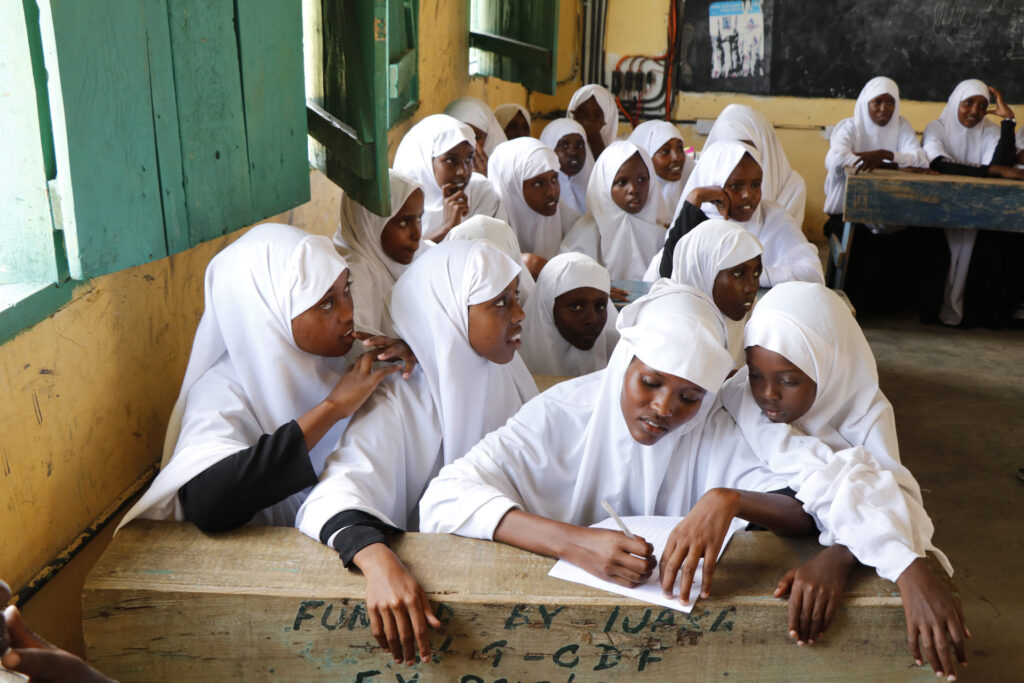
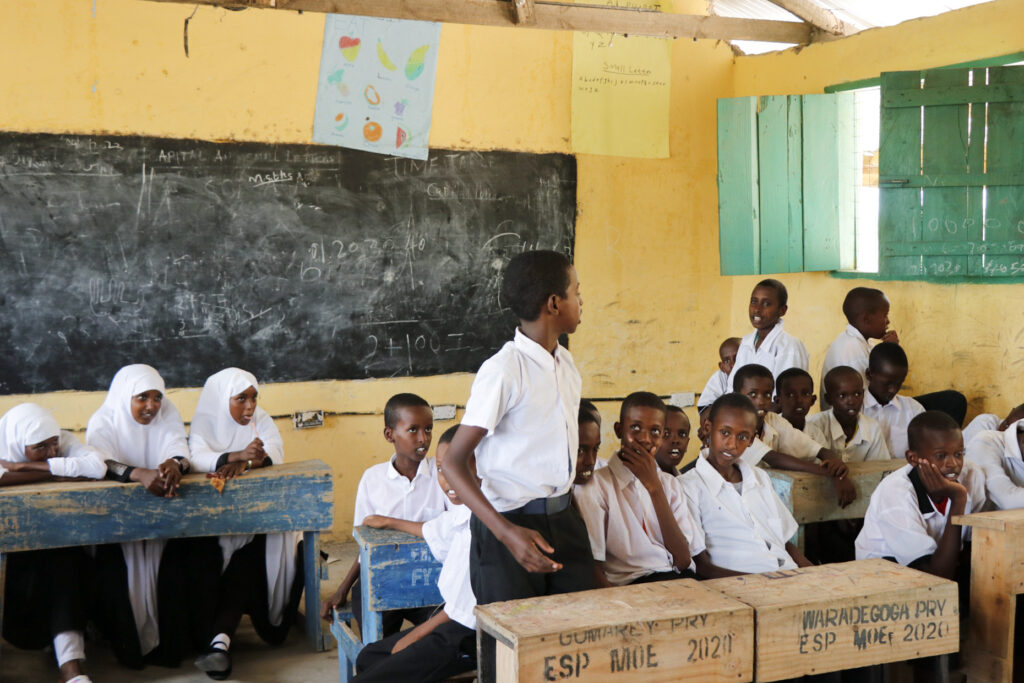
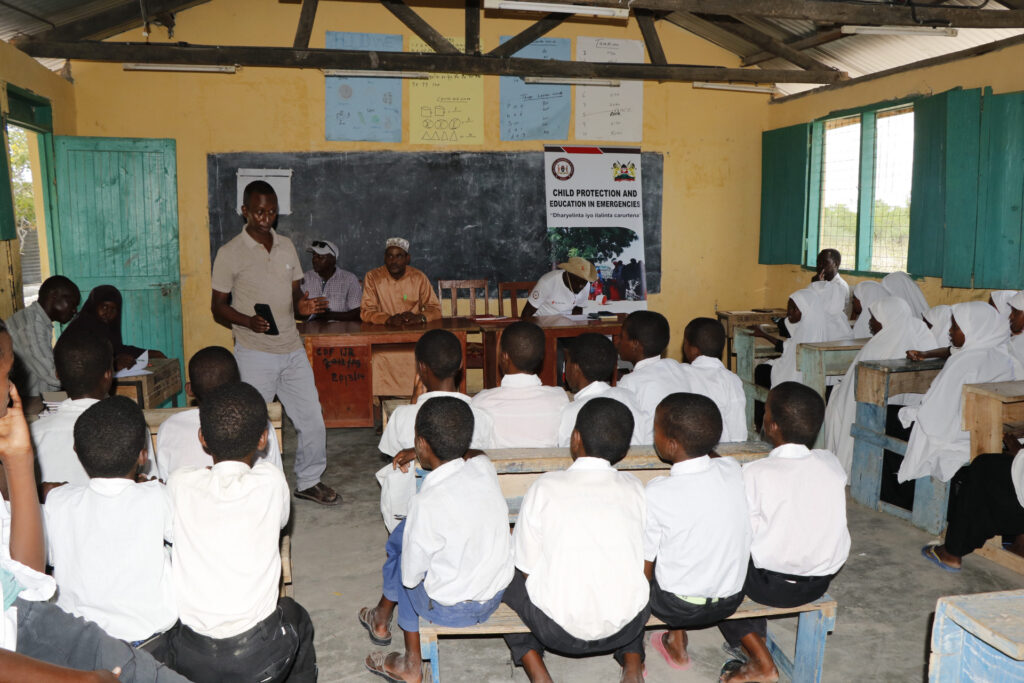
Fun Facts About our ACHIEVMENTS
Parents on child protection
Dropouts to re-enroll to vocational education.
Teachers 100 teachers through professional development programs.
Achievements in Details
- Over 100 school management committee (SMC) members and parents received Gender-sensitive and child protection training, promoting school re-entry and ending violence against children.
- Training for 45 education officials, children’s officers, community leaders, and youth groups focused on crisis-sensitive education planning, disaster risk reduction, and social-emotional learning.
- Emergency preparedness plans were developed for seven schools in Garissa
County, enhancing resilience and inclusivity. - A hazard mapping exercise engaged children, schools, and communities in Ijara and Lagdera sub-counties, informing resilient programming.
- 100 teachers benefited from professional development programs that emphasized gender-responsive and child-centred teaching methodologies.
- Infrastructure projects included the construction of a kitchen at Khalankhal Primary, the distribution of water tanks to three schools, and the rehabilitation of sanitation facilities at Afwuine.
- Capacity-building initiatives strengthened the participation and accountability of PTAs and student councils.
- Established Child Rights Clubs in seven schools within Tana River sub-county, training 30 school patrons and administrators on child rights and CRC guidelines.
- Supported the formation of 7 Child Rights Clubs, provisioned learning materials, and installed talk boxes with printed guidelines.
- Over 70 talk box committee members were trained, enhancing children’s participation and advocacy for their rights.
- Conducted back-to-school campaigns, successfully supporting over 200 dropouts to re-enroll.
- Vocational education support was extended to 200 youths, empowering them with marketable skills for future opportunities.
